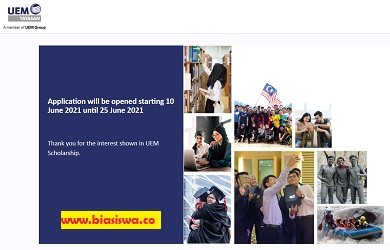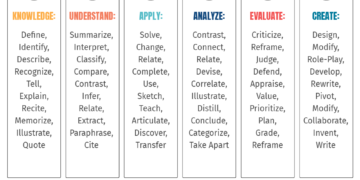The Moment Of Opportunity For eLearning Is Now!
Digital transformation has been dramatically altering the business landscape over the past decade. And since the pandemic, the pace to digitize businesses has been rapidly increasing. Arguably, we are navigating through a new “industrial” revolution—one in which, in order to thrive in today’s ever-evolving industries, modern organizations must transform the way they design, deliver, and evaluate learning.
Technology is now ubiquitous. Whether it’s new cloud-based apps that underpin how we work or the latest mobile phone holding court in our hands, there is no point in building a business around today’s latest technology if we don’t simultaneously develop the skills needed to take advantage of this exciting new world.
The ways of working in the twenty-first century is changing forever. Jobs for life, and traditional linear career paths are increasingly disappearing, meaning that careers are not as orderly as they once were. Today career breaks, career pivots, and second and third career starts are becoming as common as is switching industries. Increasingly, and particularly amongst the younger working generation, careers are being viewed more as individual development experiences, with each experience offering the chance to acquire new skills and new perspectives.
How Can eLearning Help Drive A Digital Transformation?
Exactly how can eLearning help drive a successful digital transformation process? At its most basic, simply using eLearning to substitute classroom-based learning as part of disseminating the information that you need to share as part of your digital transformation process will make sure your digital transformation programs progress as smoothly as possible. But the challenge for senior executives, HR, and Learning and Development (L&D) teams is to do so much more with eLearning and digital transformation initiatives in order to make the most of the modern eLearning tools at their disposal. Today, organizations are battling it out to both retain and acquire the best talent. Indeed, given the current employment challenges, L&D teams have the opportunity to reinvent learning throughout their organizations and have a hugely positive impact on the digital transformation in all businesses [1].
eLearning’s Many Positive Impacts On Digital Transformation
Many organizations’ transformation strategy includes changes in how they support their staff in day-to-day learning and across their careers within the organization. Most are also leveraging new Learning Management System (LMS) technologies and adopting new ways of thinking about learning.
Moreover, media-rich learning libraries promote today’s self-directed learning, moving organizations away from simply adopting an LMS for their learning needs. Employees want easily searchable content and want to consume it quickly and in a format they choose, regardless of location or device. This is the type of User Experience we have all got used to on our smartphones outside the workplace, and this is the experience we also expect in the workplace.
If how we access our individual learning needs have changed over the past few years, so have the pressures on HR and L&D teams to understand how learning has completely transformed within our organizations. Learning is no longer simply about closing an individual’s skill gap or solving a performance problem. It’s much more about becoming a strategic enabler for the business.
Ways eLearning Can Help With Digital Transformation
It’s my view that L&D now has the potential to make a much greater impact on our organizations than ever before. Arguably, it can be the more important thing to get right as an organization. Digital transformation is about products and services, customer touch points and enabling data-driven decision making. Obviously, it will take more than just the L&D team within your organization to make this shift. Nonetheless, Learning and Development do have a big role to play in the success of any digital transformation. Below are some straightforward ways that eLearning can help:
- Many employees are likely to be afraid of the changes that digital transformation will bring to them as individuals. Fears around potential redundancies, about not being able to deliver future expectations because they lack the necessary digital capabilities, and so on can lead to a lack of engagement, or worse, resistance to, digital transformation. As mentioned earlier, a simple “win” is to ensure that you use eLearning to help address these fears by creating eLearning courses that explain your digital transformation strategy, goals that you are expecting to achieve, and what impact it will have on your employees.
- As you digitally transform your organization, you will undoubtedly need people with different skills, including new digital skills. Today’s so-called “resignation generation” is highlighting the problem that most sectors are experiencing is a high demand for employees with the types of digital and technical skills you might need [1]. And although recruiting new people to the business will undoubtedly be required, you are unlikely to bridge your entire skills gaps simply with new recruits. You will also have to develop the required digital skills of existing employees. eLearning is ideal for training staff in many digital skills topics, providing the additional benefits of enhancing the confidence of your employees while also breaking down internal resistance to digital transformation initiatives.
- This proactive approach to “upskilling” your employees means that it will be easier to identify skill gaps and recruit new staff, whilst retaining your current employees. Embracing eLearning early in any digital transformation program will give the best opportunity to fully embed a learning mindset across the business, greatly increasing future engagement for other eLearning initiatives.
- Building on the point above, it is also crucial that you make eLearning courses engaging and interactive. Today’s eLearning courses can be much more highly engaging than traditional offline classroom training. Training courses that are boring or lack engagement with the learners will be detrimental to the digital transformation program, and with today’s eLearning technology, there is little excuse to not make eLearning courses highly engaging and interactive.
- It’s also important to realize that training, like messaging, is not a “one-for-all” solution. Indeed, customizing your eLearning messages and training will make a significant contribution to the success of your digital transformation eLearning courses. Today’s modern LMS tools make it easy to provide personalized training and avoid a “one-size-fits-all” mentality.
- It’s important to remember that digital transformation is not a destination in and of itself. Technologies are constantly changing and improving, meaning that training will also become a key component of the digitally transformed business. Regularly engaging with your learners will help embed a stronger learning culture within the business and go a long way to making certain that your business is continually addressing any skill gaps.
- You’ll also want to leverage the learning analytics that are inherent in many of today’s better LMS tools. By analyzing this data for trends and patterns, organizations can continually refine their programs to improve individual engagement, increase completion rates, and teach content more effectively. In addition, the LMS platform’s data can be used to analyze the effectiveness of individual courses, based on participation and other success metrics to identify opportunities for improvement.
- A major trend that we’re seeing is the need to embrace collaborative or social learning. Extending the traditional LMS toolkit to include Learning Experience Platforms (LXP) is perhaps one of the most powerful ways that eLearning can contribute to the success of any digital transformation initiative. Ask most people and they’ll tell you that while formal learning is essential, it is by interacting and engaging with others who have more or complementary skills to our own that the real magic happens. Integrating functionality that provides both formal and informal learning within the same platform helps ensure that you drive up learner engagement. This fundamental principle is driving a new generation of social learning tools that are enabling an organization’s users to communicate and share resources to enhance their understanding of learning content.
So, What Happens Next?
Digital transformation is happening, with our personal and working lives being fundamentally changed. L&D has a real opportunity to create genuine value. Since the pandemic, eLearning budgets are increasing, and Learning and Development increasingly has the support of C-level executives. This gives L&D leaders the real opportunity to lead many of the digital changes that today’s organizations need.
We now live in a vastly different workplace and today’s workforce is now looking to L&D teams to help them navigate through it. All around us, the way we operate as employees is constantly changing. The most obvious of these changes is today’s “work from home” culture and the fact that employees are geographically dispersed and increasingly quick to move between roles and organizations. The pressure is on Learning and Development teams to onboard higher volumes of remote staff, often remotely, and ensure that they become competent and engaged employees as quickly and seamlessly as possible.
The simple truth is that as a function, L&D needs to be proactive in preparing the business for a prosperous future. Knowledge is changing. A recent report by Dell Technologies stated that the rapid technological changes we are currently experiencing means that 85% of the jobs that will exist in 2030 have yet to be invented. As a result, employees increasingly expect their employers to give them the opportunities to learn what they need to help them perform in their roles. They expect autonomy in how they master their roles, illustrating the agility expected from both their managers and senior executives. As already mentioned, talent development is vital in attracting and retaining great staff and, consequently, improving business performance. Learners and employers are turning to Learning and Development to provide solutions to these challenges.
Solutions won’t be found in traditional learning methods developed for a pre-digital economy. It’s time for L&D leaders to look at the LMS tools available to them in order to help deliver on this transformative agenda. Those who do not do so risk appearing irrelevant to staff, who will then start looking elsewhere for their training needs. Moreover, as a function, they may also appear less valuable to business leaders who require a clear Return On Investment.
Conclusion
A modern LMS should serve the needs of the worker and the manager. For example, this means having an LMS solution that supports self-directed learners with content directly relevant to their professional and personal development, easily discovered and delivered to any device. For managers, this means an LMS solution that enables them to directly develop and curate content that supports their teams and gives them the data that gives them actionable insights. In practice, this means:
- Deploying a Learning Experience Platform (LXP) alongside your LMS, with immediate access to a broad catalog of high-quality content
- Easy to use course and content creation tools to empower experts in your business to rapidly develop learning content
- Tools to align business objectives, learning courses, and an individual’s performance management
- A powerful analytics and reporting tool to give precise insights into skills gaps across the organization
Adopting the use of these tools will enable your organization to meet head on and resolve many of the current challenges facing them today. eLearning training should be a central consideration within any digital transformation initiative you plan to implement. It will help keep your team enthusiastic and engaged, and, with the right LMS solution, it will ensure that skills levels in your organization constantly improve.
References:
[1] Tackling the resignation generation: L&D and LMSs




















